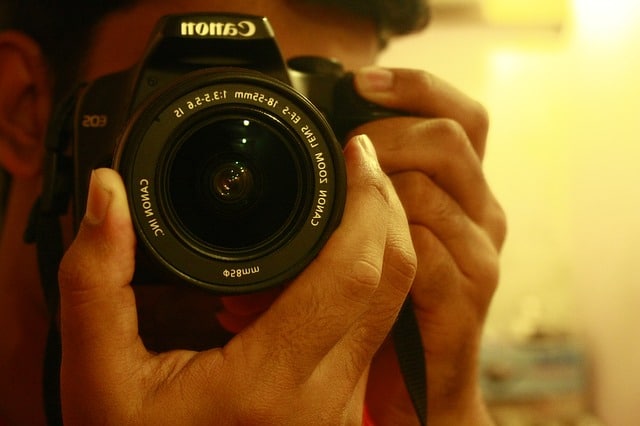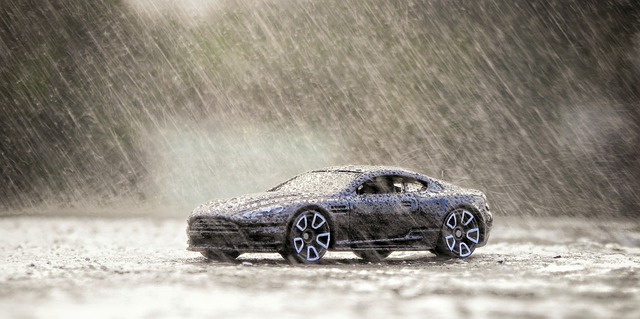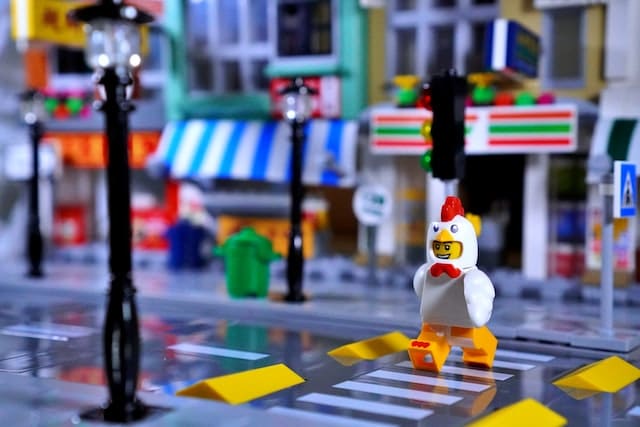For ideal toy photography lighting, balance natural and artificial light to enhance your shots. Use golden hours for soft, natural light and softboxes for diffused effects. Position reflectors opposite your light source to brighten shadows, and experiment with backlighting for dramatic silhouettes. Adjust white balance for true colors and consider varying angles to play with light and shadows. Keep exploring these strategies to elevate your toy photos to the next level.
Understanding Natural vs. Artificial Light
When capturing toy photography, understanding the differences between natural and artificial light is essential for achieving the desired aesthetic. Natural light, like sunlight, offers a soft and authentic feel, making your toy scenes appear more lifelike. It changes throughout the day, offering a variety of moods without any equipment. However, it can be unpredictable due to weather and time.
On the other hand, artificial light gives you full control over intensity, direction, and color. You can use lamps, LED panels, or flash to create consistent lighting conditions. This allows for creative effects and eliminates reliance on the weather. Each light type has its benefits; by experimenting, you'll discover what works best for your style and the story you want to tell through your toys.
Choosing the Right Time of Day for Outdoor Shots
Why does timing matter for outdoor toy photography? The time of day can dramatically affect your shots. Early morning and late afternoon, known as the golden hours, provide soft, warm light that's perfect for highlighting details and creating beautiful shadows. You'll avoid harsh midday sunlight, which can create unwanted glare and overly bright hotspots on your toys.
Consider the story you're telling with your toys. Morning light can evoke freshness and new beginnings, while evening light often imparts a sense of mystery or nostalgia. Be mindful of shadows and angles as the sun moves, adjusting your setup accordingly. Weather conditions also play a role; overcast skies can offer consistent light, minimizing harsh contrasts. Experiment with different times to find the perfect setting for your vision.
Utilizing Softboxes for Diffused Lighting

While the natural light of golden hours offers stunning results, sometimes you need control over your lighting environment, and that's where softboxes come in. Softboxes provide diffused lighting that's perfect for toy photography, creating soft shadows and even highlights. By enclosing the light source, they spread light uniformly, reducing harshness and glare. You'll appreciate how softboxes minimize unwanted reflections on shiny toy surfaces, enhancing details and textures.
To get started, position the softbox at a 45-degree angle to your subject. This creates a well-balanced light distribution. Experiment with distances to adjust light intensity and shadow softness. Softboxes also allow you to maintain a consistent lighting setup when shooting multiple scenes, ensuring uniformity across your photos. They're your best ally for achieving controlled, professional-looking shots.
Mastering the Use of Reflectors
Reflectors are indispensable tools that can transform your toy photography by directing light exactly where you need it. They allow you to brighten shadows and enhance details without adding extra lights. Start by positioning a reflector opposite your main light source. This technique bounces light back onto the toy, softening harsh shadows and creating a more balanced image. You can experiment with different reflector colors: silver for a crisp, bright effect, or gold for a warm glow.
Don't hesitate to move the reflector around. Angling it differently can entirely change the mood of your photo. Try holding it closer for stronger highlights or further away for subtlety. Always pay attention to how the light interacts with your toys, and adjust to achieve the right look.
Exploring the Effects of Backlighting

When you're ready to elevate your toy photography, consider experimenting with backlighting to create dramatic and enchanting images. Position a light source behind your subject, allowing it to shine through the toy's edges and create a glowing silhouette. This technique adds depth and highlights details, making your toy stand out against the background.
Adjust your exposure settings to prevent the background from becoming overly bright, ensuring that your toy remains the focal point. You can also experiment with different colored lights or gels to add a unique mood to your photos. Be mindful of reflections, as they can distract from your subject. By mastering backlighting, you'll enhance your toy photography, creating mesmerizing images that draw viewers' eyes.
Creating Dramatic Shadows With Directional Light
To craft compelling and dramatic shadows in your toy photography, use directional light to your advantage. Position a single light source at an angle to cast strong, defined shadows. This approach adds depth and intrigue, making your toys look more lifelike and engaging. Experiment with different angles and distances to see how shadows change in size and intensity.
A low light angle can create long, exaggerated shadows, adding drama to the scene. Meanwhile, placing the light above can produce more subtle, yet striking, effects. Don't hesitate to adjust the toy's position to maximize the shadow's impact. Always observe how shadows interact with the background; sometimes, a simple shift can transform an ordinary scene into an extraordinary one.
Implementing Light Modifiers for Creative Effects
To elevate your toy photography, consider using light modifiers like diffusers and reflectors. Diffusers soften harsh light, creating a gentle and even illumination that reduces unwanted shadows. Meanwhile, reflectors can enhance highlights, adding a sparkling touch to your toy subjects by bouncing light into key areas.
Diffusers for Soft Lighting
Capturing the perfect shot in toy photography often relies on mastering the nuances of lighting, and diffusers play an essential role in achieving soft, even illumination. To create a natural look, place a diffuser between your light source and the toy. This will scatter the light, reducing harsh shadows and glare. You can use items like white fabric, translucent paper, or a commercial diffuser. Experiment with different materials to see what gives you the desired effect.
Position the diffuser close to the light for a softer glow, and adjust the distance between the light and the toy to control the intensity. Remember, soft lighting highlights details and textures, making your toy subjects appear more lifelike. Consistently using diffusers will elevate your toy photography dramatically.
Reflectors Enhance Highlights
While diffusers soften shadows, reflectors can be your secret weapon for adding dimension and depth to your toy photography. By strategically placing a reflector, you can bounce light onto your subject, highlighting details and creating vibrant contrasts. It's especially useful in low-light settings or when natural light is limited. Choose from white, silver, or gold reflectors based on the effect you want. Silver offers a bright, neutral reflection, ideal for enhancing colors. Gold adds warmth, imbuing your photos with a cozy glow. White provides soft, subtle illumination, perfect for gentle highlights. Experiment by adjusting the angle and distance of the reflector to find the perfect balance. With practice, you'll transform ordinary toy shots into dynamic, eye-catching compositions.
Balancing Ambient and Flash Lighting
When you're shooting toy photography, achieving the right balance between ambient and flash lighting can elevate your images from good to stunning. Start by evaluating the natural light available. Ambient lighting sets the mood and provides a soft, even illumination. However, it might not always highlight your toy's intricate details. That's where flash lighting comes in. Use it to accentuate features and create depth, but be cautious not to overpower the ambient light. Adjust your flash output to complement rather than compete. You can also diffuse the flash to soften shadows. Experiment with different angles to see how shadows and highlights interact. By fine-tuning this balance, you'll create enchanting shots that bring your toys to life with depth and dimension.
Enhancing Details With Spotlights
Using spotlights in toy photography lets you highlight key features, drawing attention to intricate details that might otherwise be overlooked. You can position the light to create dramatic shadows, adding depth and a sense of mystery to your images. Don't hesitate to experiment with different angles to see how shadows and light can transform your scene.
Highlighting Key Features
Spotlights can be your best friend when it comes to highlighting key features in toy photography. By directing a focused beam of light, you emphasize intricate details that might otherwise go unnoticed. Position your spotlight to illuminate the areas you want to draw attention to, such as a toy's facial expression or unique textures. This controlled lighting allows you to showcase the craftsmanship of the toy, making it stand out vividly against its surroundings.
Experiment with different angles and distances to find what works best. You might discover that a slight tilt or shift can make all the difference in capturing the toy's essence. Remember, the goal is to create a visual impact that captivates viewers and enhances your toy's story with a touch of brilliance.
Creating Dramatic Shadows
While spotlights excel at highlighting key features, they also offer a fantastic opportunity to play with shadows. You can create depth and drama in your toy photography by positioning the spotlight strategically. Angle the light to cast long, bold shadows behind or alongside your figures. This technique enhances the three-dimensional look, adding intrigue and mood to your shots.
Experiment with different angles and distances to see how shadows interact with your composition. Move the light source around to find the perfect balance between illumination and obscurity. Pay attention to how shadows can emphasize textures or details you want to highlight.
Adjusting White Balance for Accurate Colors
To achieve accurate colors in your toy photography, adjusting the white balance is essential. White balance helps you match the color temperature of your light source, guaranteeing true-to-life hues. Start by setting your camera's white balance mode to auto and take a test shot. If the colors seem off, switch to a preset like daylight, cloudy, or tungsten, depending on your light source. Experiment with these settings until you find the most natural look for your toys.
For more control, use a custom white balance. Capture an image of a plain white or gray card under the same lighting conditions. Most cameras let you use this reference to set a custom white balance. By doing this, you guarantee that your toy photos' colors pop and remain consistent.
Frequently Asked Questions
How Can I Prevent Unwanted Reflections on Toy Surfaces?
To avoid unwanted reflections on toy surfaces, position your light source at an angle, use diffusers to soften light, and avoid direct lighting. A polarizing filter on your lens can also help reduce glare effectively.
What Camera Settings Are Ideal for Toy Photography Lighting?
You should set your camera to a low ISO to reduce noise. Use a small aperture, like f/8, for depth of field. Adjust shutter speed based on lighting. Experiment with white balance for color accuracy.
How Do I Achieve Consistent Lighting Across Multiple Toy Photos?
Imagine you're shooting a series of superhero toys. Use softbox lighting to eliminate harsh shadows and maintain consistency. Position your lights at the same angle for each shot, and you'll achieve a uniform look across your photos.
Are There Budget-Friendly Lighting Solutions for Beginners?
Sure, you can find budget-friendly lighting solutions. Use affordable LED desk lamps, reflectors made from aluminum foil, or even natural light. Experiment with positioning and distance to achieve the best results without breaking the bank.
How Can I Create a Sense of Depth With Lighting in Toy Photos?
You can create depth by using a key light to highlight the toy's front and a weaker backlight to separate it from the background. Position lights at different angles to enhance shadows and depth perception.
At a Glance
You've now revealed the secret to lighting toy photography like a wizard casting spells. Whether you're harnessing the sun's golden hour or crafting artificial light masterpieces, you've got the tools to make your toys leap off the screen. Use those softboxes and reflectors like a maestro conducting a symphony of light. With backlighting, modifiers, and spotlights, your photos will be nothing short of legendary. Remember, adjusting white balance is your magic wand for vibrant, true-to-life colors.





